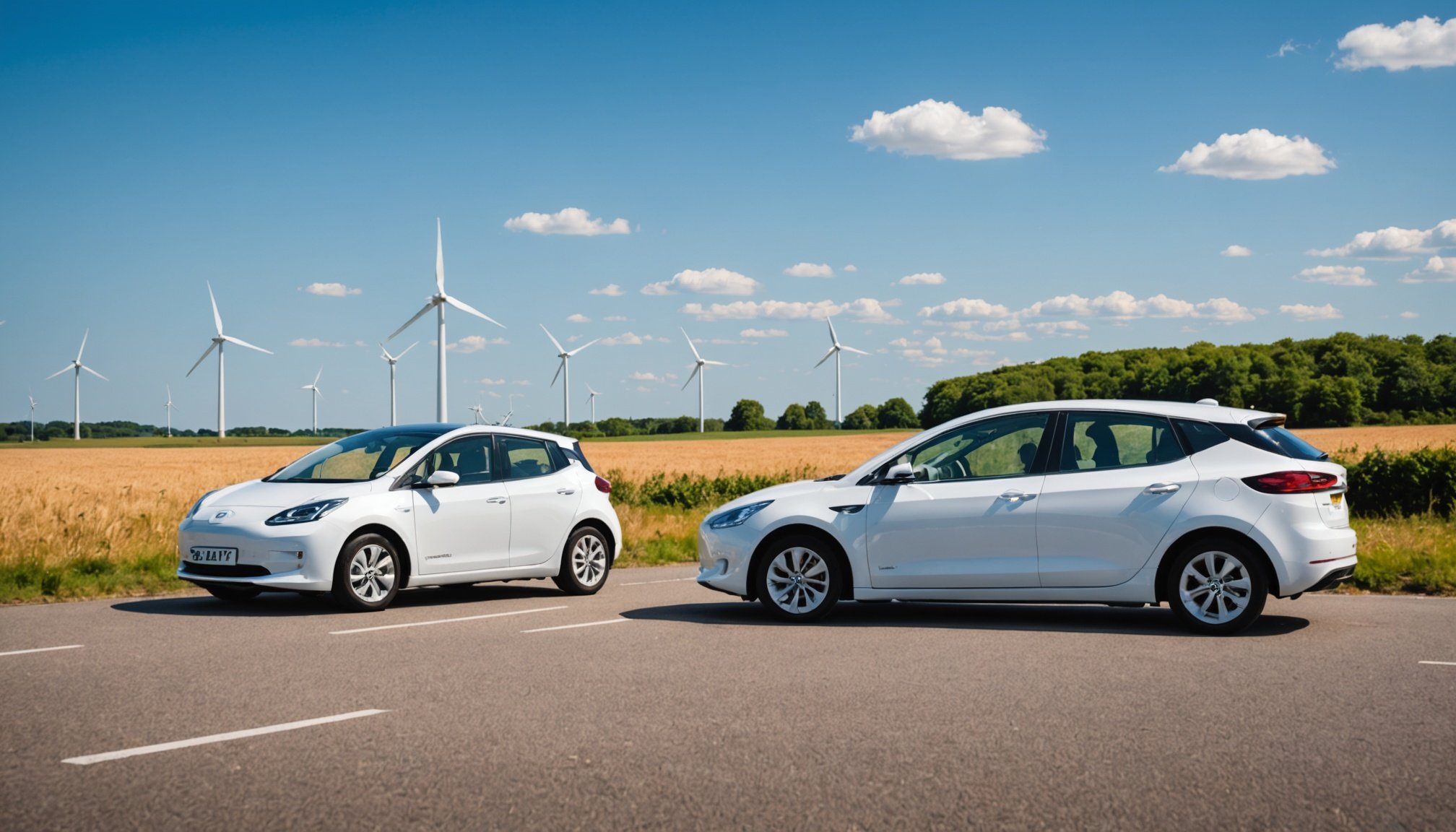Understanding the Electric Vehicle Market in the UK
The electric vehicle market in the UK is experiencing significant growth, thanks to several key drivers. The increasing awareness of climate change, governmental incentives, and advances in vehicular technology are pivotal in this shift. With the UK government’s commitment to eliminating new petrol and diesel car sales by 2030, the electric vehicle market is poised for expansion.
For car rental firms, staying abreast of these changes is invaluable. Understanding the electric vehicle market not only helps these businesses align with environmental goals but also enhances their competitive edge. Insight into industry trends allows companies to strategically plan the inclusion of electric vehicles in their fleets.
Also to read : Boosting Employee Engagement in the UK: The Role of CSR Initiatives in Business Success
Analyzing market trends gives rental firms the foresight to make informed decisions regarding fleet expansion and customer preferences. Additionally, it helps in identifying the right timing for transitioning to electric vehicles to maximise profitability and sustainability. As the UK car rentals industry gravitates towards greener solutions, adapting to the changing landscape through market analysis becomes integral.
Such comprehensive understanding and strategic adaptation are essential in ensuring that rental firms not only participate but thrive in the evolving electric vehicle space. Achieving operational efficiency while keeping an eye on industry trends will be the fulcrum of success in this burgeoning market.
In parallel : Unlocking the Power of User-Generated Content: The Ultimate Guide for UK Beauty Brands to Elevate Their Marketing Strategies
Fleet Management for Electric Vehicles
Incorporating electric vehicles (EVs) into fleet management is crucial for rental companies aiming for operational efficiency. Understanding the nuances of electric vehicle integration aids in streamlining processes and boosting performance.
Assessing Fleet Needs
When transitioning to an electric fleet, it’s vital first to assess current fleet requirements. This analysis ensures the selection of EV models aligns with business objectives. Consider factors like the vehicle’s range, charging infrastructure, and the typical travel patterns of your clients.
Transitioning to Electric Vehicles
A strategic approach toward phasing out traditional vehicles involves gradually increasing the number of EVs as part of your fleet. This phased integration minimizes disruption and allows for careful evaluation of fleet performance at each stage. It’s also essential to train employees to handle and maintain these new vehicles efficiently.
Maintenance and Upkeep for EVs
Maintaining an EV fleet demands unique strategies distinct from conventional vehicles. Regular software updates and monitoring battery health are critical. Additionally, implementing cost-effective maintenance practices such as predictive maintenance can preempt issues before they escalate, ensuring fleet reliability. Identifying the right EV models and effectively managing their upkeep will support long-term benefits and operational success in the rental market.
Enhancing Customer Engagement
Promoting a positive customer experience in the realm of EV rentals is essential for broadening EV adoption. One of the primary steps involves educating consumers about the benefits and functionalities of electric vehicles. Addressing their questions such as, “How far can an electric vehicle travel on a single charge?” can significantly increase their confidence in making informed rental choices. Typically, most modern electric vehicles can cover between 100 to 300 miles, depending on the model and driving conditions.
Integrating a user-friendly booking system is another effective method to boost engagement. Ensuring intuitive online platforms where customers can view EV specifications, conduct comparisons, and book instantly makes the rental process smoother and more appealing. Quick access to pertinent information aids in fostering a seamless customer journey.
Gathering feedback is critical for continuous improvement. Enabling easy feedback loops allows businesses to understand and address customer needs, ultimately leading to enhanced rental services. Conducting surveys shortly after EV rentals can provide timely insights into customer experiences, helping refine offerings.
By focusing on these strategies, rental companies can transform potential barriers into opportunities for innovation, fostering a more supportive environment for EV adoption.
Building Charging Infrastructure
Developing robust charging infrastructure is pivotal for enhancing EV accessibility and supporting the growth of electric vehicles. The collaboration between rental companies and existing charging networks can amplify the reach and convenience of charging stations. Partnering with established networks offers multiple benefits; it provides broader charging options and alleviates the burden of independently developing extensive infrastructure.
Implementing onsite charging solutions at rental locations is another critical strategy. This ensures customers can charge vehicles conveniently, enhancing the overall customer experience. Onsite charging facilities can range from fast chargers to more cost-effective, slower options that are suitable for vehicles that have longer downtime between rentals.
To further encourage desirable charging behaviours, car rental firms can pursue customer incentives for charging. Such incentives might include discounts for rentals returned with a full charge or loyalty points for using designated charging stations. These practices not only promote the use of sustainable energy but also enhance customer engagement by adding value to the renting process.
Integrating comprehensive charging solutions, through strategic partnerships and customer incentives, positions rental firms advantageously in the growing electric vehicle market, ensuring they meet the expectations of environmentally conscious consumers.
Sustainability Initiatives
For car rental firms, embracing sustainability initiatives is not just a corporate responsibility but also a necessity in today’s environmentally conscious market. Implementing eco-friendly practices within operations can make a modest yet crucial impact on the overall environmental impact of the industry.
Firms aiming to portray their commitment to sustainability can start by actively communicating sustainability efforts to their customers. This might include showcasing how integrating electric vehicles contributes to reducing carbon footprints. Informing customers about the specifications of EVs in terms of emissions, alongside providing transparency about fleet sustainability practices, can build trust and encourage EV adoption.
Moreover, measuring and reporting on the environmental impact of these initiatives is essential. Companies should track metrics such as emissions reductions or energy consumption and present these findings in annual sustainability reports. This quantitative display of progress not only reassures stakeholders but also provides concrete data, fuelling future competitive advantage.
Implementing eco-friendly practices could also involve incorporating renewable energy sources for onsite charging stations or optimising energy efficiency across operations. Through these concerted actions, rental firms can align themselves with a more sustainable future while positively influencing consumer attitudes and preferences. As the electric vehicle market evolves, sustainable practices will be at the forefront.
Case Studies and Success Stories
Exploring industry case studies offers critical insights into adapting to the evolving electric vehicle market. Notable UK car rental firms are pioneering innovative strategies, turning challenges into competitive advantages. One leading firm, for example, successfully transitioned a substantial portion of its fleet to electric vehicles. By doing so, they not only met eco-friendly objectives but also enhanced their brand image, gaining a significant market share.
Successful strategies involve thorough market research and customer-focused approaches. Understanding the precise needs of customers and integrating them into business models is crucial. One firm conducted exhaustive surveys to understand customer preferences, leading to targeted marketing campaigns that effectively communicated the benefits of electric vehicles. These tailored efforts increased their EV adoption rate remarkably.
Lessons learned from early adopters highlight the importance of best practices in fleet management, charging infrastructure, and customer engagement. These firms showed that embracing technology and customer feedback loops can lead to operational enhancements and broadened clientele bases. From these case studies, rental firms can glean insights into efficient practices, utilizing these learned experiences for growth in the electric domain. Sharing these industry successes supports collective advancement, encouraging other firms to innovate and progress within the expanding electric vehicle landscape.
Future Trends and Considerations
As the electric vehicle (EV) domain advances, understanding future trends and considerations is essential for strategic planning. A significant aspect involves potential advancements in EV technology. Emerging innovations like extended battery life and enhanced autonomous driving capabilities promise increased efficiency and reduced costs, fuelling market expansion.
Government policies continue to play a pivotal role in shaping the future of EVs. Subsidies, tax benefits, and regulatory measures can significantly influence market demand and development. For instance, the UK’s commitment to banning new petrol and diesel car sales by 2030 demonstrates a robust governmental push towards electric vehicle adoption. Such mandates have emphasised the need for industries to pivot rapidly towards sustainable options.
Strategic planning for sustainable growth focuses on the alignment of technological advancements with market readiness. Rental firms must anticipate technological shifts and align their strategies accordingly. This includes investing in skills and infrastructure that support the evolving demands of the EV sector. Companies should prepare for potential challenges, such as increased competition and technology obsolescence, by fostering innovation and building adaptive business models.
In conclusion, incorporating future trends and policies into strategic plans offers businesses a competitive edge in the growing electric vehicle market.











